“3 New Tools That Can Help You Create Better Content, Convert More Readers and Conquer Higher Search Rankings” plus 2 more |  |
- 3 New Tools That Can Help You Create Better Content, Convert More Readers and Conquer Higher Search Rankings
- The Must-have Blog Post Topic Generation Tool
- What Makes Good Content Marketing Great?
| Posted: 11 May 2012 01:09 PM PDT This guest post is by Neil Patel of Quick Sprout. Anybody can be a content marketer … but not everyone can be a good or even great content marketer who creates articles that convert and rank high in the search engines on a consistent basis. Over time experience will teach you how to do this, but you also need the right tools. You need tools that will help you spot the hot topics at that very moment, generate list upon list of high-converting long-tail keywords, automate some of your processes, and even show you the best places to publish your content. In the last several months four very cool tools have come onto the scene that will help you do just that. Eric showed us one of them—the Content Strategy Generator Tool—earlier today, but I wanted to show you three others that are definitely worth experimenting with. IFTTT: Automate your content curation tasks
What exactly is a "recipe"? That's just a set of commands to perform an action when certain conditions are met. That's what the acronoym means: If This, Then That. How can this tool help you create compelling, high-converting content? It will basically automate tasks that you normally do. For example, Evernote is the ultimate tool bloggers use to save ideas we come across on the web. Even though the steps to save that content to Evernote are pretty simple, wouldn't it be nice to accomplish two tasks in one—and even eliminate some steps in the process? Standford Smith recently shared his favorite IFTTT recipes that make content curation painless:
When curation tasks like these are automated for you, you can concentrate on creating better content that will convert more readers and rank higher. Übersuggest: the keyword search tool on steroidsIf you want a keyword search tool that will help you build a highly relevant and targeted list of long-tail keywords, then you need Übersuggest. It combines Google Suggest with other services, and it's simple to use. Just write a keyword in the box, choose a language, and get suggestions. You can break these down into just normal web searches, or you can look for terms in verticals like video, shopping, and news. If you click on one of the keywords it then delivers even more suggestions: There are literally thousands of content ideas you could get from these real user queries. Click the plus sign and this will put the keywords in a bucket: After you've selected a few more keywords, you can then click "Get" and then copy and paste these keywords: If you want to take this idea a step further, throw out all those keywords that won't work for you. Those remaining drop into Google's keyword suggestion tool. From that list you can grab the hottest trending keywords and create some high-converting content that also ranks well. Google Insights: 4 ways to boost your content conversion ratesIn its most basic use, Google Insights for Search is great for seeing what people are searching for using broad terms, or narrow ones. But as a content marketer, you are looking to use Google Insights to help you create highly-targeted content that will boost your conversion rates. Google Insights offers four ways to do that, using its filters. The first filter we’ll look at is the Web Search. The Web Search filterLet's say you’re a real estate agent in Seattle. You are looking to create some articles for your blog, but you are tired of talking about home prices and want some fresh and relevant topics to discuss. To keep the content tight and focused on your market, you can filter the content to your region and restrict results to those from the last three months. Then, choose "real estate" as the category. Note: Leave the "Search terms" box blank if you want to see what’s trending. This is what you could see: What you care about here are the Rising Searches and the Breakout search terms. As you can see, when I did this search, the "Trayvon Martin case" was a hugely popular term in the real estate category. Perhaps you could create some fresh content around issues like the pros and cons of living in a gated community, or a guide to creating a voluntary Neighborhood Watch program. Both are highly-qualified topics that could rank high. The Image Search filter The next filter you can use to generate some high-converting content ideas is Image Search. This time you will enter some search terms. Let's say you’re a graphic designer and you want to see what's trending among images. You choose "book covers," "email newsletters," and "desktop." Your results will show you that the email newsletter topic is flat-lining, but the desktop topic is flying high! That means you need to roll up your sleeves and focus your content on a topic like desktop design. If I were you, I’d use the CSGT or Übersuggest to generate some very refined keywords that will attract that right people and convert well for you. The News Search filter The third filter to try is the News Search. This is another one that works really well if you leave the search terms box blank. Imagine you are a blogger who covers technology, so you enter a search in the News. You make it a worldwide search in the last 90 days, and select Computers & Electronics. Your results will look something like this for that time range: Notice how Apple dominates the top six spots, but doesn’t hold place two and four? Those offer some interesting possibilities for content creation. For example, "anonymous" refers to the hacktivist group Anonymous—you may want to cover their latest efforts. And the "galaxy s3" refers to the latest rumors about this smartphone. Perhaps you can follow that as a possible story idea. Either way, these will be hot, trending topics that could help you land some heavy traffic! The Product Search filterThe last filter we’ll look at is the Product Search filter. Anyone who sells anything can use this—and it doesn't have to be a physical product. It could be an information product or even a service. Say you have a blog from which you sell stock buying information in the form of email alerts, and you want to relate something back to one of your products. Search "worldwide" and "finance" without putting anything in the "search terms". Here’s what you will get: Because it was tax season when I ran this search, most of the searches were around the topics of taxes. But what is sr22? And why is it breaking out? Click on it and you get this report: This is important, because the “sr22″ search term can refer to a number of things, including insurance, pistol, or an airplane. These particular searches, however, are focused on finance, which should give us a clue that this topics is probably about insurance. The subcategory tells us that it is most definitely about insurance. Click on "Insurance" and you'll see that sr22 is a specific kind of auto insurance. Now you can create content around sr22 auto insurance, and then tie it back into one of your products, capturing the attention of—and hopefully some conversions from—highly-relevant traffic. The blogger’s favorite tool/sIn the end, if you want to succeed as a content marketer, then you need to know what type of content is working, what topics are trending well and which keywords are relevant to your context. The tools above will help you find that out. These tools as they are your key to creating content that not only ranks well but converts readers into subscribers or customers. Are there any other new tools that I missed that will help a content market create better content? Share them in the comments. Neil Patel is an online marketing consultant and the co-founder of KISSmetrics. He also blogs at Quick Sprout. Originally at: Blog Tips at ProBlogger |
| The Must-have Blog Post Topic Generation Tool Posted: 11 May 2012 10:00 AM PDT This is a guest post by Eric Siu of Evergreen Search.
Unfortunately, sometimes it’s very hard figuring out how to come up with blog post ideas. And based on that quote, if you can’t come up with ideas, then it doesn’t look like you have a starting point from which to create a fortune. Over the years, many different aggregators and tools have become standard ways to generate post topics. Some people might use Quora or Yahoo Answers to look for problem-solving topics. Others might use Twitter or news aggregators to check for trends. All these tactics are effective, but it can be difficult to track everything at once. What if there was an all-in-one tool that could combine these tactics into one, so you didn’t have to painfully click around anymore? Enter: the Content Strategy Generator Tool (CSGT) by Daniel Butler of SEOgadget.
What is the Content Strategy Generator Tool?The CSGT is a Google Docs spreadsheet that utilizes importXML functions to pull various data around the web for content brainstorming. That content doesn’t have to be restricted to blogging—the tool can be used to research videos, infographics, or audio. With this tool, you can spot trends, get great headline ideas, come up with your own spin on topics, view new keyword opportunities, and more—and all in one spot. Talk about saving time! Setting it up is a matter of completing a few steps:
What’s insideThe spreadsheet itself can display quite a bit of information. This section will break down the different types of data that is pulled into the sheet so you can begin to formulate a strategy on how you’d like to use it. NewsCSGT pulls news from Google News and Bing News. For Google News, three columns in the spreadsheet give you the title, author and time posted, and a description of the article. For Bing News, you’ll find two columns: one for “best match,” and one for “most recent” articles. This gives you the flexibility to dig through all the latest topic-related news on Bing. Digg and Reddit are also included in the sheet. Similar to the information it provides on Bing, the sheet will display “most dugg” and “most recent” data from Digg. It will show you the top posts only from Reddit. Social MediaIf you’re looking for video content ideas, you’re in luck: CSGT also displays the top videos from YouTube related to your search. Topsy, which is a great tool for displaying trending tweets, shows you the latest tweets in the last day as well as the top trending tweets. You’ll also see the usernames, author names, tweets, times of tweets, and number of retweets for each trend. Twittorati Search will pull in more tweets from the highest authority bloggers, and display the user and Twitterati Authority as well. Facebook isn’t left out, either. AllThingsNow pulls the hottest Facebook shares for the day into the spreadsheet. AggregatorsCSGT also pulls in topics from various aggregators like Blog Catalog, Fark, Redux, Helium and Cracked. These sites are all different in their own ways and, at the end of the day, add more diversity to the scope of topics being presented to you. Perhaps you might look at Cracked and come up with a funny spin on a niche topic—anything could happen! Q+A SitesThe benefit of having Yahoo Answers in the spreadsheet is that this data shows you popular problems that people are actually having right now. Yahoo Answers will pull the most-answered questions related to your query, and display them for you. You can then go to Google and search on those specific questions. If the answers on the first page aren’t that good (and you think you can do better), you may just have picked up something to write about. MiscellaneousUber Suggest is an excellent keyword suggestion tool and CSGT brings it right to the sheet so you don’t need to go to the website to find suggestions for other relevant keywords that you can target. Google Insights will show you what the top and rising searches are in your niche. And finally, How Stuff Works results will give you ideas for potential how-to content that you can generate. Source and PlaceThat’s not all, though—the Source and Place tab will tell you how to find the top Twitter experts, bloggers, and editors in your niche. Use this to figure out who you can follow—and start new relationships with. How to use the toolWhenever you are stuck or want to spot trends on a subject, just pop open this tool and enter a topical keyword into cell B3. You can use modifiers to do some more digging, but the bottom line is that this is a great starting point for any content campaign. At the end of the day, the main benefit of the Content Strategy Generator Tool is to save you time while giving you more ideas. The simplicity and the fact that it’s free makes this tool a must-have for any content creator. Have you used the CSGT yet? Did you find it useful? Tell us what you thought of it in the comments. Eric Siu is the Vice President of SEO at Evergreen Search, a digital marketing agency in los angeles. He’s also written about Minimum Viable SEO: 8 Ways To Get Startup SEO Right and 10 Immutable Laws of SEO. In his free time, he likes watching football, playing poker, hiking, reading, or eating ice cream. Feel free to follow him on Twitter( @ericosiu) or on Google+:+Eric Siu Originally at: Blog Tips at ProBlogger The Must-have Blog Post Topic Generation Tool |
| What Makes Good Content Marketing Great? Posted: 11 May 2012 07:05 AM PDT Content marketing—using content to promote our product or service—is a favorite promotion method of today’s bloggers. Many of us are in the content business, so content marketing makes sense. The activities that come under the umbrella of content marketing are broad. They cover everything from guest posting to uploading content to purpose-built networks (like YouTube or Soundcloud), to offering your own free, downloadable content products on your own blog. Content marketing opportunities are, literally, limited only by your imagination. But this isn’t to say that all content marketing is good content marketing. Or that all strong content marketing is as great as t could be. What makes good content marketing great?The answer to this question depends on your blog, target audience, and the content marketing goals you’ve set yourself. There’s not really a one-size-fits-all solution, though as we know, some solutions are used more commonly than others. However, if you’re looking at new ways to use content marketing to promote your blog, these are some of the main factors you’ll probably want to think about before you jump in. Does the opportunity support your brand values?When we’re promoting our blogs, we’ll often look for the opportunity that gives us the biggest bang for buck. For example, we’ll aim to have our guest posts published on sites that have larger readerships rather than on those with smaller audiences. While that’s fine, it’s also important to look at the outlet itself, and see whether it supports your brand effectively. For example, both my Digital Photography School and ProBlogger brands use image content. So, in theory, I could use that content to market both brands on Pinterest. While the content is highly appropriate for the outlet, it’s easy to see that Pinterest is more closely aligned with the brand values of a visual brand like dPS than it is with those of ProBlogger. While Pinterest could be a good way to market both brands, it’s a no-brainer for dPS. IF only I had time to be active on Pinterest! Is the format appropriate?There’s sometimes a tendency among some content marketers to jump on whatever bandwagon comes by—whether it’s creating video, or publishing a free blog manifesto, or something else. The thing is that not all formats for content marketing are going to be appropriate for you. Let’s look at video. If you don’t use video on your blog, and have never made a video, then creating videos just to market your blog may not be the best idea. It may well take you a lot of time, and since you’re not experienced with the format, the content you produce may not be of a level of quality that supports your brand as best it could. This isn’t to discourage anyone from trying something new—it’s just that you can make content marketing as difficult or as easy as you like. Embarking upon a brand new format purely for marketing purposes is going to be time-consuming and challenging. And the results may not do as much for your blog as you hoped, especially if (tying in the point above) the format doesn’t complement your blog’s branding. Does the content offer a doorway into your blog?In some ways, content marketing is like providing free samples of your product, so it’s important to make sure the content you use is a fair representation of what your blog offers. If you create a great video to promote your blog, but the blog itself contains no video, then you may risk disappointing the new visitors who were attracted specifically by your promotional video. However, this issue goes deeper than formats. Look at what you’re communicating through the content marketing piece, and consider whether that message a) resonates with new readers and b) reflects a core characteristic or value of your blog. Once the reader consumes that promotional piece, and arrives at your blog, is there a natural pathway for them to follow to engage more heavily with your blog on the basis of the expectation that your content marketing has set? I’m not just talking about a conversion funnel here—I’m talking about an emotional and intellectual sense of engagement. That process may be upset if your promotional content looks different, sounds different, or delivers differently than your blog does. Consistency of message and tone is as important as consistency of look and feel and formats. Is the content targeted to the audience?Any potential content marketing outlet will have an audience. Does that audience reflect a market that you want a foothold in? And does your content speak to that audience? This consideration is particularly important if you’re repurposing existing content for an outlet whose audience is slightly different from your own—and that’s likely to be the case with most content marketing opportunities. To be successful, your content marketing efforts will require you to micro-target your brand and message to new audience sub-segments. So simply rehashing the same content over and over in different formats or outlets probably won’t be as effective as targeting each communication to each specific opportunity and its particular audience. That means more work for us, but also a better return on the investment we make, in terms of time and effort, to promote our blogs. Does the content provide real value in and of itself?What constitutes “value”? The answer to that question lies with your target audience. A recent, very successful content marketing effort by CollegeHumor.com makes that point—here, value is measured in terms of laughter and fun. For your brand, “value” might mean practical outcomes, inspiration, or something else. The important thing is that the content you’re using in your content marketing strategy provides real value. That’ll get it shared more often, backlinked more often, and more search traffic than lower-value content that exists merely to beat your own drum. Also, high-value content is likely the only kind that will meet the points we talked about above. Your content marketing plansAs I said, the possibilities for content marketing are almost endless, but the factors I’ve touched on here are among those that make good content marketing really great. Which ones are you using, and which have been the most successful for you? Share your experiences with us in the comments. Originally at: Blog Tips at ProBlogger What Makes Good Content Marketing Great? |
| You are subscribed to email updates from @ProBlogger To stop receiving these emails, you may unsubscribe now. | Email delivery powered by Google |
| Google Inc., 20 West Kinzie, Chicago IL USA 60610 | |






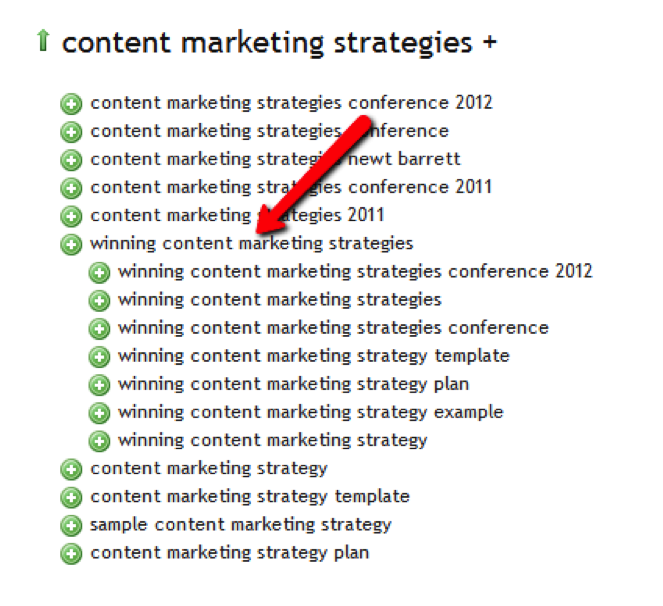
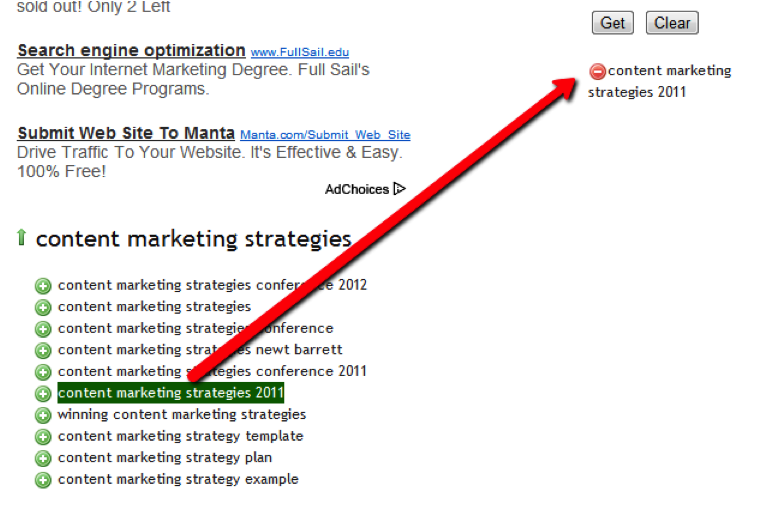
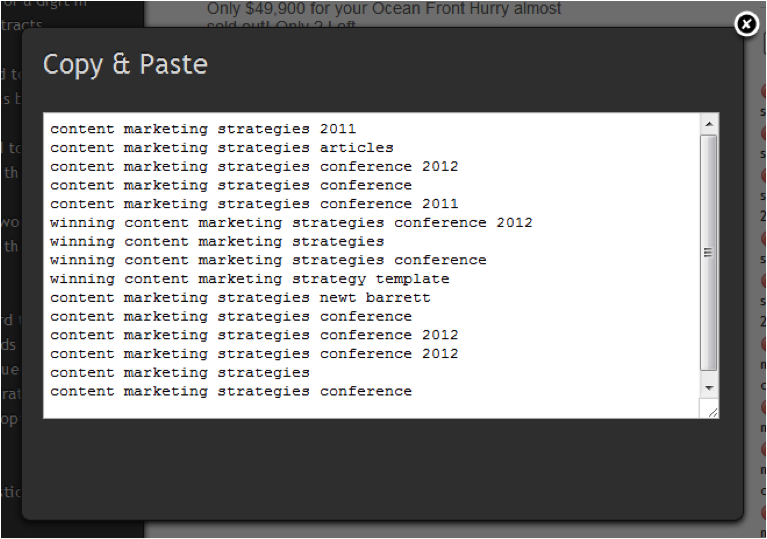

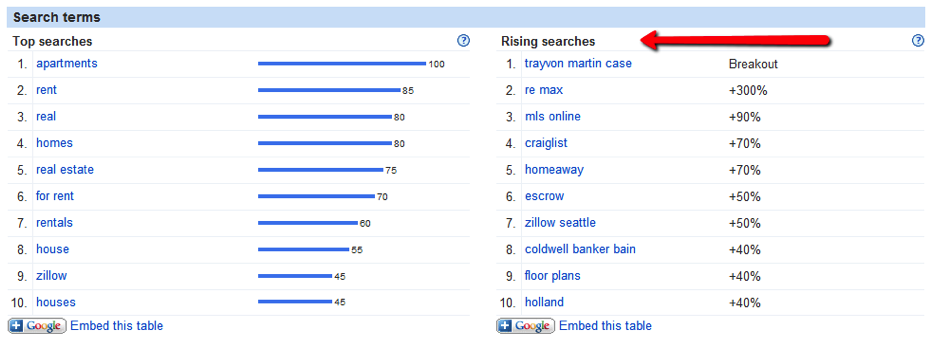



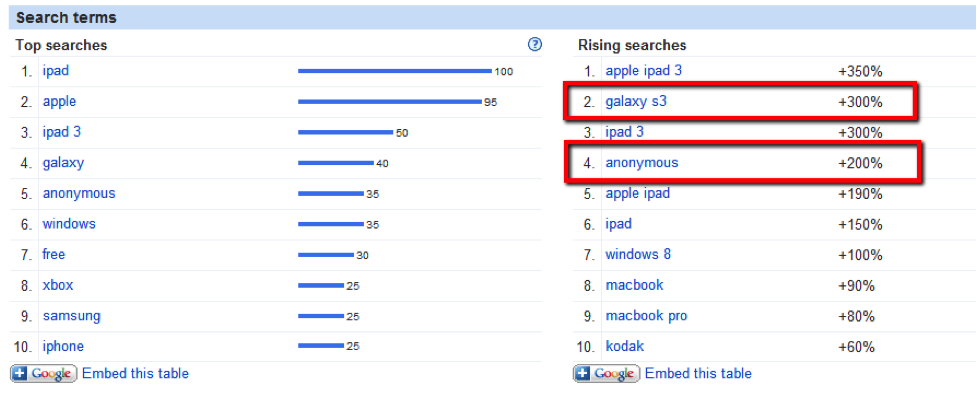

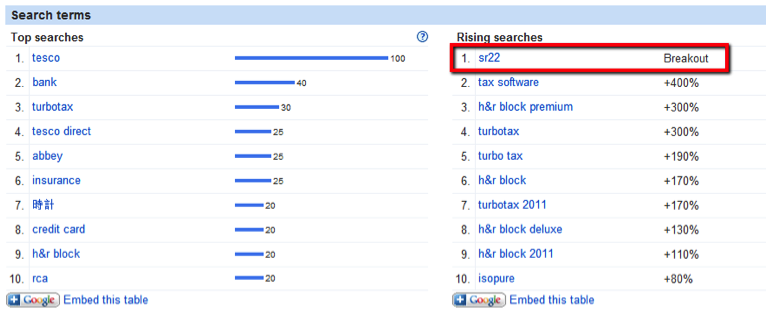










.jpg)
0 comments:
Post a Comment